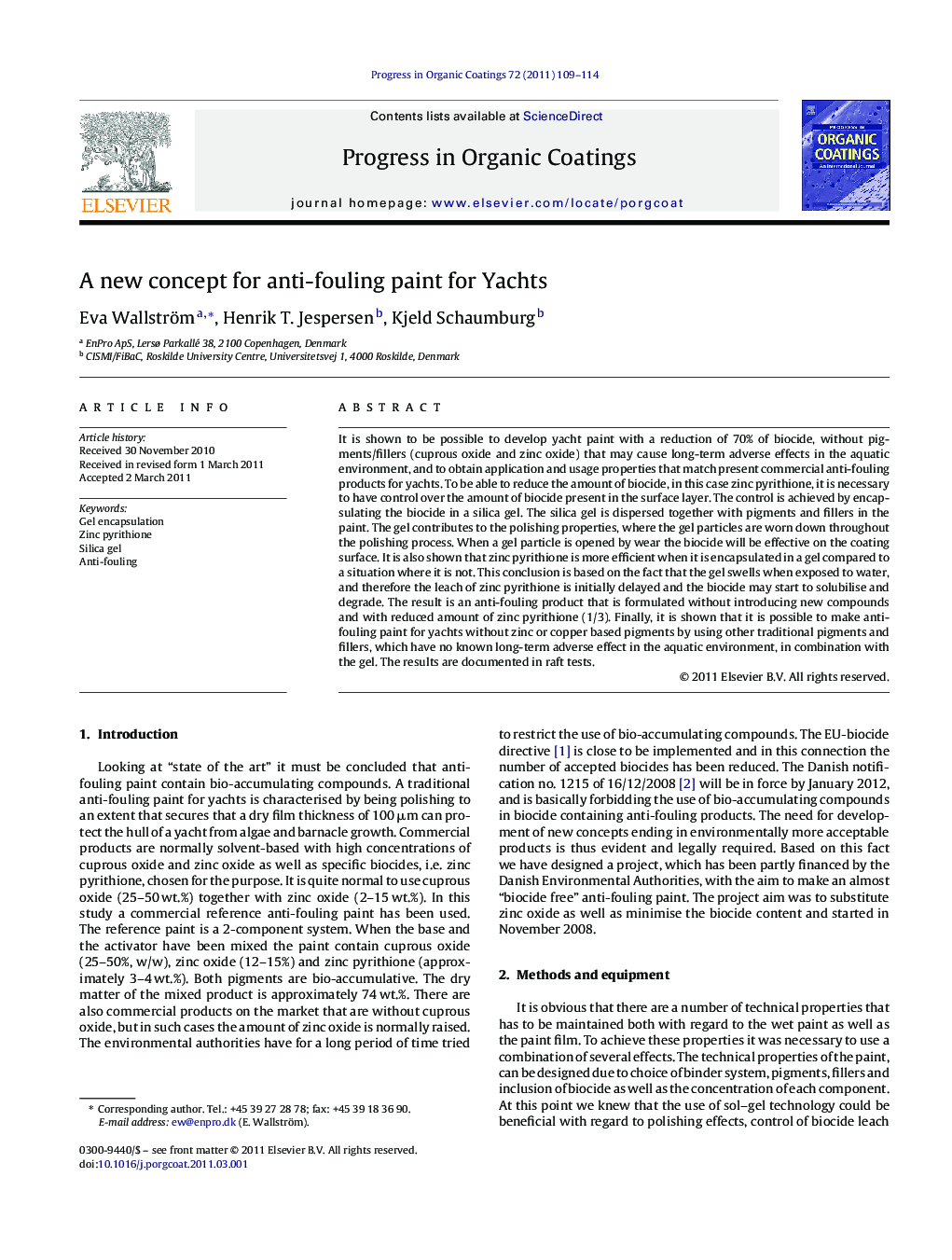| Article ID | Journal | Published Year | Pages | File Type |
|---|---|---|---|---|
| 693278 | Progress in Organic Coatings | 2011 | 6 Pages |
It is shown to be possible to develop yacht paint with a reduction of 70% of biocide, without pigments/fillers (cuprous oxide and zinc oxide) that may cause long-term adverse effects in the aquatic environment, and to obtain application and usage properties that match present commercial anti-fouling products for yachts. To be able to reduce the amount of biocide, in this case zinc pyrithione, it is necessary to have control over the amount of biocide present in the surface layer. The control is achieved by encapsulating the biocide in a silica gel. The silica gel is dispersed together with pigments and fillers in the paint. The gel contributes to the polishing properties, where the gel particles are worn down throughout the polishing process. When a gel particle is opened by wear the biocide will be effective on the coating surface. It is also shown that zinc pyrithione is more efficient when it is encapsulated in a gel compared to a situation where it is not. This conclusion is based on the fact that the gel swells when exposed to water, and therefore the leach of zinc pyrithione is initially delayed and the biocide may start to solubilise and degrade. The result is an anti-fouling product that is formulated without introducing new compounds and with reduced amount of zinc pyrithione (1/3). Finally, it is shown that it is possible to make anti-fouling paint for yachts without zinc or copper based pigments by using other traditional pigments and fillers, which have no known long-term adverse effect in the aquatic environment, in combination with the gel. The results are documented in raft tests.
► Yacht paint without pigment/fillers (cuprous oxide and zinc oxide) that may cause long-term adverse effects in the aquatic environment and a reduced amount of other biocides has been developed. ► Yacht paint with a low water uptake including encapsulated zinc pyrithione in an aerogel is a more efficient anti-fouling agent compared with yacht paint where the zinc pyrithione is outside the aerogel. ► The aerogel is contributing to the yacht paint polishing effects. ► Anti-fouling effects are documented in raft tests.
